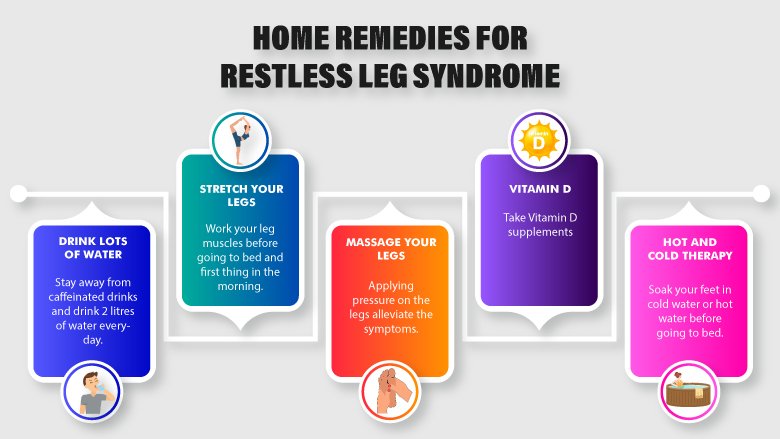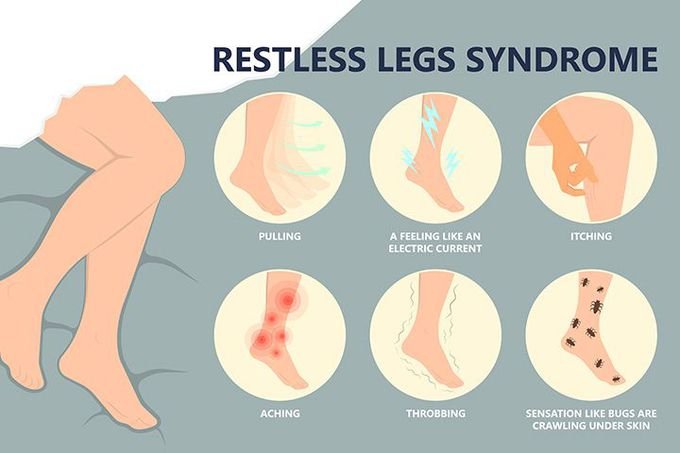Discover the secret to relieving Restless Leg Syndrome naturally with these unexpected and effective remedies that will surprise you!
Table of Contents
- Introduction: The Tingle and Twitch of Restless Legs
- What is Restless Leg Syndrome?
- Natural Ways to Calm Your Legs
- The Magic Mineral: Magnesium
- The Iron Link
- Fishy Fats and Omega 3
- Let’s Get Physical
- Breathing Easy: Sleep Apnea and RLS
- Walking Away from Pneumonia
- Creating a Calming Bedtime Routine
- Conclusion: Embrace the Quiet Night
- FAQs
Introduction: The Tingle and Twitch of Restless Legs
Have you ever experienced the feeling of your legs tingling and twitching uncontrollably, especially at night when you’re trying to sleep? This sensation is known as Restless Leg Syndrome (RLS), and it can be quite bothersome for both children and adults. In this article, we will explore natural ways to soothe the discomfort of Restless Leg Syndrome and help you get a good night’s rest.
What is Restless Leg Syndrome?
Restless Leg Syndrome (RLS) is a condition where you feel tingly or twitchy sensations in your legs, especially when you’re sitting or lying down for a long time. It can make you want to move your legs to get rid of the uncomfortable feeling. RLS can affect both children and adults, and it often makes it hard for people to fall asleep.
Understanding RLS
Imagine that feeling when your foot falls asleep and starts tingling or feeling like it’s moving on its own. That’s kind of what RLS feels like, but it happens more often and can be really annoying when you’re trying to relax.
RLS in Kids
Even kids can get RLS, which might make it hard for them to sit still in class or when they’re trying to watch a movie and relax. It’s not fun to deal with, so finding ways to soothe it naturally can really help.
Natural Ways to Calm Your Legs
In order to find relief from restless leg syndrome (RLS), there are natural strategies that can help soothe the uncomfortable sensations in your legs. Let’s explore some simple and effective ways to calm your legs naturally.

Image courtesy of www.novomedshop.com via Google Images
The Magic Mineral: Magnesium
If you’re dealing with RLS, incorporating magnesium into your diet can be a game-changer. Magnesium is a mineral that plays a crucial role in relaxing muscles, which can help alleviate the restlessness in your legs. So, how can you add more magnesium to your meals?
How Magnesium Helps
Magnesium works in your body by relaxing muscles and promoting a sense of calmness. This mineral can be like a soothing balm for your restless legs, making it easier for you to find relief and rest.
Magnesium-Rich Foods
To boost your magnesium intake, try adding foods like bananas, almonds, spinach, and avocado to your meals. These kid-friendly options are not only tasty but also packed with this essential mineral to support your muscles.
The Iron Link
Iron deficiency can also contribute to RLS symptoms, so making sure you have enough iron in your diet is crucial for easing the discomfort in your legs. Why does your body need iron, and how can you get more of it naturally?
Why Your Body Needs Iron
Iron is essential for carrying oxygen throughout your body, including to your muscles. Without enough iron, your muscles may not function optimally, leading to restlessness and discomfort.
Iron in Foods
You can find iron in foods like lean meats, beans, fortified cereals, and dark leafy greens. Including these iron-rich options in your meals can help support your muscles and combat the symptoms of RLS.
The Magic Mineral: Magnesium
Have you ever heard of magnesium? No, it’s not a spell from a wizard, but it sure does have magical properties when it comes to soothing restless legs. Let’s dive into how this amazing mineral can help calm those tingly and twitchy sensations.
How Magnesium Helps
Picture magnesium as a superhero for your muscles. It helps them relax and dance to a calmer rhythm. When your muscles are nice and relaxed, those restless leg feelings can’t bother you as much. Magnesium is like a soothing lullaby for your legs, helping them find peace and quiet.
Magnesium-Rich Foods
Luckily, there are delicious foods that are packed with magnesium to save the day. How about munching on some yummy bananas, crunchy almonds, or creamy yogurt? These foods are not only tasty but also great sources of magnesium to help your legs feel more at ease.
The Iron Link
Iron is a crucial mineral that your body needs to function properly. It plays a vital role in carrying oxygen to all parts of your body, including your muscles. When you don’t have enough iron in your system, it can lead to various health issues, including restless leg syndrome (RLS).

Image courtesy of www.sleepbo.com via Google Images
Why Your Body Needs Iron
Your body uses iron to create hemoglobin, a protein in your red blood cells that helps transport oxygen throughout your body. Without enough iron, your muscles may not receive an adequate oxygen supply, which can lead to muscle cramps and spasms – symptoms commonly associated with RLS.
Iron in Foods
Luckily, there are plenty of foods that are rich in iron and can help you maintain healthy iron levels. Foods like lean meats, poultry, fish, nuts, beans, and fortified cereals are all excellent sources of iron. Encourage your child to eat a variety of these foods to ensure they’re getting enough iron in their diet.
Fishy Fats and Omega 3
Let’s dive into the world of fishy fats and omega 3 to explore how they can help soothe restless leg syndrome (RLS) naturally. Omega 3 is like a superhero for our bodies, and we’ll discover why it’s essential for our health.
What is Omega 3?
Omega 3 is a special type of fatty acid that our bodies need to function properly. Just like how we need certain vitamins to stay healthy, omega 3 is crucial for our overall well-being. These fatty acids are found in different types of food, especially in fish and nuts.
Foods that are Omega 3 Friends
If you want to get more omega 3 in your diet to help with RLS, you can try adding certain foods to your meals. Fish like salmon, mackerel, and sardines are excellent sources of omega 3. Not a fan of fish? No problem! You can also get omega 3 from chia seeds, flaxseeds, and walnuts. These foods not only taste good but can also make your legs feel better!
Let’s Get Physical
One of the natural ways to help soothe Restless Leg Syndrome (RLS) is through physical activity. Moving your body can really make a difference in how your legs feel, so let’s explore some fun ways to get active!

Image courtesy of www.synergyresearchcenters.com via Google Images
Stretching and Flexing
To start, stretching and flexing your muscles can help relax them and reduce the discomfort of RLS. Simple exercises like bending and straightening your legs, reaching for your toes, or doing gentle leg swings can all be beneficial. It’s like giving your legs a little massage from the inside!
Walking Fun
Walking is another fantastic way to combat RLS. Whether it’s a leisurely stroll around the block or a playful walk in the park, getting those legs moving can really help. You can even make it more exciting by exploring new places, playing games like tag while walking, or turning on some music to dance along the way!
Breathing Easy: Sleep Apnea and RLS
Are you struggling with Restless Leg Syndrome (RLS) and wonder why it’s so hard to get a good night’s sleep? Let’s take a closer look at how sleep apnea may be connected to RLS and explore some simple breathing exercises to help you relax and breathe easier.
What is Sleep Apnea?
Sleep apnea is a condition where your breathing stops and starts repeatedly while you sleep. This can lead to poor sleep quality and leave you feeling tired and irritable during the day. When you have sleep apnea, your brain and body may not get enough oxygen, which can worsen RLS symptoms.
Breathing Exercises
Don’t worry, there are some easy breathing exercises you can do to improve your breathing and potentially reduce RLS symptoms. Here are a few simple techniques to try:
| Remedy | Description |
|---|---|
| Exercise | Regular physical activity can help reduce RLS symptoms and improve sleep. |
| Magnesium | Increasing magnesium intake through diet or supplementation may help alleviate RLS symptoms. |
| Warm baths | Soaking in a warm bath before bedtime can relax muscles and calm restless legs. |
| Iron | For individuals with low iron levels, iron supplements may help relieve RLS symptoms. |
| Massage | Massage therapy can help relax muscles and reduce RLS discomfort. |
- Belly Breathing: Place your hand on your belly and take a deep breath in through your nose, filling your belly with air. Then, slowly exhale through your mouth. Repeat this several times to help relax your body.
- 4-7-8 Technique: Inhale quietly through your nose for a count of 4, hold your breath for a count of 7, and then exhale slowly through your mouth for a count of 8. Repeat this cycle a few times to calm your mind and body.
- Nostril Breathing: Close one nostril with your thumb and inhale through the other nostril. Then, close the other nostril with your pinky finger, exhale through the open nostril. Switch sides and repeat for a calming effect.
By practicing these breathing exercises regularly, you may find it easier to fall asleep and experience fewer RLS symptoms throughout the night. Remember, breathing deeply and mindfully can help your body relax and unwind before bedtime.
Walking Away from Pneumonia
Let’s clear up any confusion about walking pneumonia and Restless Leg Syndrome (RLS). While they both can affect the body in different ways, they are distinct conditions. RLS involves uncomfortable sensations in the legs that can disrupt sleep, while walking pneumonia is a mild form of pneumonia that can cause symptoms like coughing, fever, and breathing difficulties. So, if you’re experiencing leg discomfort, it’s likely RLS, but if you have other symptoms like trouble breathing, it could be walking pneumonia. Remember, it’s essential to consult a healthcare provider for proper diagnosis and treatment.
Image courtesy of www.rls.org via Google Images
Creating a Calming Bedtime Routine
Having a calming bedtime routine can help ease the tingle and twitch of restless legs before you hit the hay. Here are some steps to wind down your evening and set the stage for a restful night:
1. Screen Time Switch: Turn off those electronic devices at least an hour before bed. The blue light they emit can interfere with your body’s natural sleep cycle.
2. Cozy Corner: Create a comfy and cozy sleeping environment. Choose soft sheets and blankets, and make sure your room is cool, dark, and quiet.
3. Relaxing Rituals: Incorporate calming activities like reading a book, taking a warm bath, or practicing deep breathing exercises to help your body unwind.
4. Mindful Moments: Try to clear your mind of any worries or stress. Focus on positive thoughts and visualize a peaceful place to help calm your restless legs.
By following these simple steps and sticking to a soothing bedtime routine, you can help relax your body and mind, leading to a better night’s sleep and fewer restless leg symptoms.
Conclusion: Embrace the Quiet Night
Do you ever feel that tingle and twitch in your legs when you’re trying to fall asleep? That might be Restless Leg Syndrome or RLS. But fret not! There are natural ways to soothe those restless legs and get a peaceful night’s sleep. Let’s delve into some tips and tricks to help you embrace the quiet night.

Image courtesy of www.blakeleyfoundation.org via Google Images
Restless Nights No More
Restless Leg Syndrome, or RLS for short, can be quite bothersome, especially when you’re gearing up for bedtime. But by incorporating magnesium-rich foods into your diet, you can give those restless legs a break. Magnesium plays a key role in relaxing your muscles, making it easier for you to drift off into dreamland.
Fueling Your Body
A vital connection to RLS is the iron levels in your body. Iron helps carry oxygen in your blood, and when you don’t have enough of it, your legs might start acting up. So, remember to include iron-rich foods in your meals like leafy greens or beans to keep those legs calm and collected.
Omega-3 Goodness
Omega-3 fatty acids aren’t just good for your overall health; they might also have benefits for RLS. Fish like salmon or walnuts are great sources of omega-3, so why not include them in your diet? They could be the missing puzzle piece to calming those restless legs.
Move and Groove
Exercising, like taking a leisurely walk, can also help alleviate RLS symptoms. Stretching your muscles and going for a walk can get your blood flowing and reduce that restless feeling in your legs. It’s a fun way to stay active and calm those jumpy legs at the same time.
Breathing Easy
Sleep apnea might be another factor that plays into your restless nights. By practicing simple breathing exercises, you can improve your breathing patterns and potentially ease your RLS symptoms. So take a deep breath in and out, and let your body relax as you ease into sleep.
Embrace the quiet night by incorporating these natural remedies into your daily routine. By understanding your body’s needs and taking care of yourself, you can say goodbye to restless nights and welcome in a peaceful night’s sleep. So, relax, unwind, and let those legs find calmness in the quiet of the night.
FAQs
What is Restless Leg Syndrome like?
Restless Leg Syndrome (RLS) can feel like a tingle or twitch in your legs that makes you want to move them when you’re trying to rest or sleep. It can be uncomfortable and affect your ability to relax.
Does RLS only affect adults?
No, RLS can also affect kids. Children might experience the same uncomfortable sensations in their legs that can disrupt their sleep just like adults.
How does magnesium help with RLS?
Magnesium is a magic mineral that helps relax muscles in the body. When you have enough magnesium, it can reduce the symptoms of RLS and make it easier for you to rest.
What foods are rich in magnesium?
Foods like bananas, whole grains like oatmeal, nuts, and seeds are all tasty sources of magnesium. Including them in your meals can help you get enough of this essential mineral.
Why is iron important for RLS?
Your body needs iron to function properly, and low iron levels can contribute to restless legs. Eating foods rich in iron can help alleviate RLS symptoms.
What are some iron-rich foods for kids?
Foods like lean meats, fish, beans, and green leafy vegetables are excellent sources of iron that kids can enjoy as part of a balanced diet.
What is omega 3 and why is it beneficial for RLS?
Omega 3 is a type of healthy fat that can support overall health, including potentially reducing symptoms of RLS. Including omega 3-rich foods in your meals can be beneficial.
Can walking really help with RLS?
Yes, physical activity like walking can help alleviate the symptoms of RLS. It can improve circulation, relax muscles, and promote better sleep.
How does sleep apnea relate to RLS?
Sleep apnea is a condition where your breathing is disrupted during sleep, which can also impact the quality of your rest. Breathing exercises and good sleep habits can benefit both RLS and sleep apnea.
What is walking pneumonia and how is it different from RLS?
Walking pneumonia is a mild form of pneumonia that doesn’t always require hospitalization, while RLS is a condition characterized by discomfort in the legs. They are separate health issues with different symptoms and treatment.
How can I create a calming bedtime routine to help with RLS?
Establishing a relaxing routine before bed can signal to your body that it’s time to wind down. Activities like reading a book or taking a warm bath can help you relax and improve your sleep quality.




